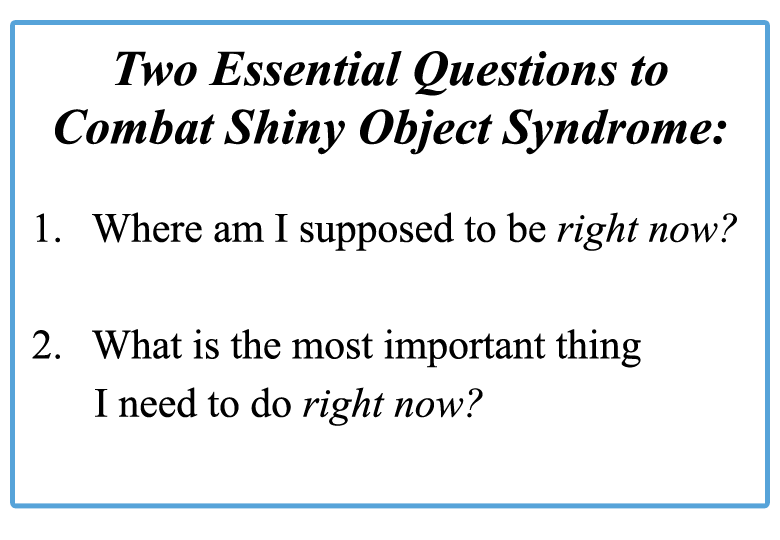Is there any better place than the land of adolescents for harvesting lessons learned in dealing with distractions?
My husband teaches high school English (ever-courageous soul). One of his favorite principals, now retired, had two questions he would ask students when he’d see them wandering the halls during class times:
These simple questions invited students to stop and think about the best use of their time right now and allowed them to course correct (which usually meant getting back to class).
Let’s face it; there are a lot of shiny objects out there that pull us off task. Shiny objects like email, texts, unscheduled phone calls, conversations from the next cube or in the hallway en route to meetings (many of which are shiny objects, in and of themselves). Oh, and let’s not forget the siren of the Internet and clicking on one too many interesting links that have little to do with our initial query (guilty as charged!). Some days are downright blinding for the glare and impeding our vision.
Shiny objects affect all leaders to some degree, even the most disciplined ones –those who have learned to avoid eye contact in the hallways; only agree to meetings where their specific expertise is warranted; batch and respond to email three times a day on schedule (pillars of the community!). And while putting on the sunglasses helps, it’s rarely enough. The volume of information radiating from all corners of the office has simply become too much for even the most resolute leaders, much less mere mortals.
Most of us need a way to stay the course. And, we can benefit from the same two questions asked by the principal to invite reflection about the best use of our time right now.
Asking yourself whether you really need to be at that meeting to gain the breathing room you need to bring a high priority deliverable over the finish line.
And, consciously choosing when and how often you respond to email enables greater focus for critical impact work.
Engage your “Inner Principal” for a week and see what happens. It may make the difference between a “what just happened?” kind of week, and one in which you head into the weekend with an accomplished spring in your step.
Time for lunch!
Share This Post:
Speak Your Mind